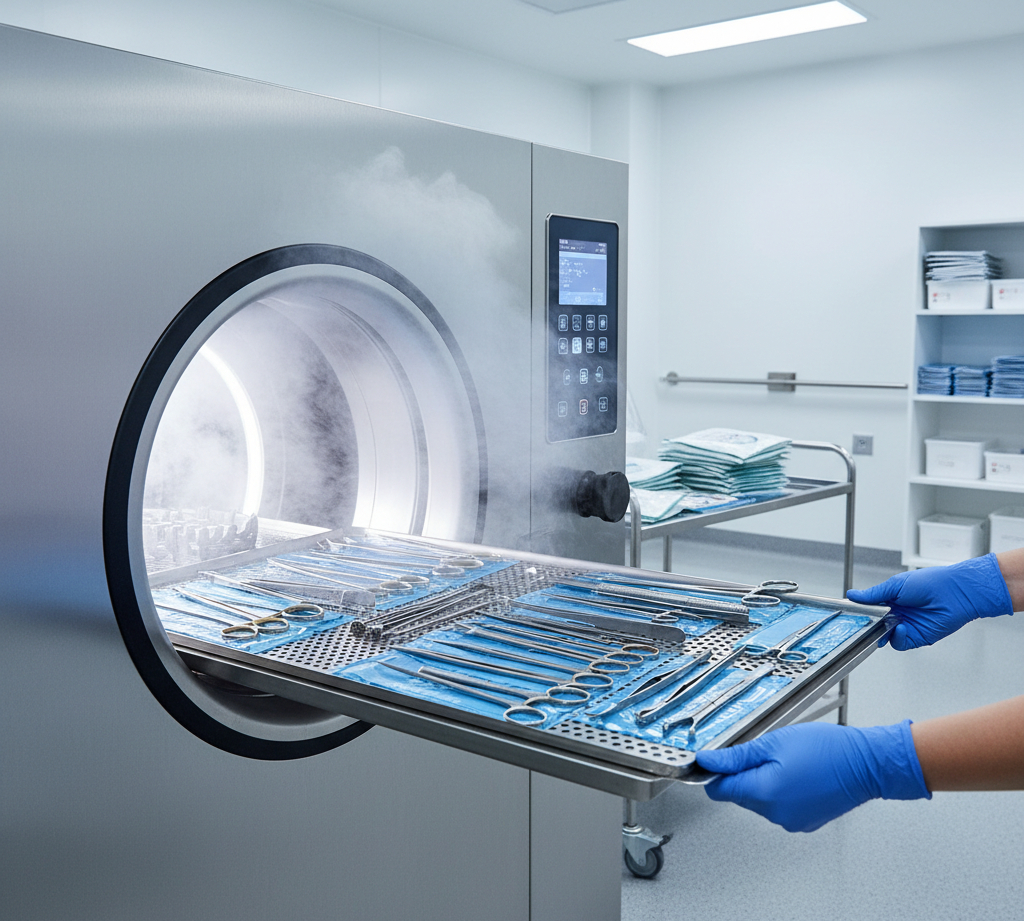Sterilization is one of the most critical aspects of healthcare. Every day, surgical instruments are used in operating rooms, dental clinics, and medical facilities worldwide. These instruments come into direct contact with blood, tissues, and body fluids. If not sterilized properly, they can carry dangerous microorganisms such as bacteria, viruses, fungi, and spores, which may cause life-threatening infections.
Knowing how to sterilize surgical instruments is not only essential for patient safety but also for ensuring compliance with healthcare regulations and extending the life of medical tools. In this detailed guide, we will cover the importance, step-by-step sterilization process, different methods, best practices, and common mistakes to avoid.
Why Sterilization of Surgical Instruments is Important
Surgical instruments are considered critical items in medical terminology because they enter sterile body areas. Unlike simple cleaning or disinfection, sterilization ensures that all forms of microbial life are destroyed, including spores.
Benefits of Proper Sterilization:
- Prevents Surgical Site Infections (SSIs): Reduces risk of infection after surgery.
- Protects Patients and Staff: Stops transmission of bloodborne pathogens.
- Maintains Compliance: Meets WHO, CDC, and ISO standards.
- Prolongs Instrument Life: Prevents corrosion and damage.
- Improves Efficiency: Organized sterilization saves time in operating rooms.
Step-by-Step Process of Sterilizing Surgical Instruments
The sterilization process is not just one step but a series of actions that must be followed carefully.
1. Pre-Cleaning
- Rinse instruments immediately after use.
- Use cold or lukewarm water (never hot water, as it causes proteins to stick).
- Remove visible blood, tissue, and body fluids.
2. Cleaning
Proper cleaning ensures sterilization agents reach every surface.
- Manual Cleaning: Scrub with brushes and neutral pH detergents.
- Ultrasonic Cleaning: Uses sound waves to remove microscopic debris from hard-to-reach areas.
3. Inspection and Maintenance
- Check for cracks, bends, or leftover debris.
- Lubricate hinged instruments to prevent rusting.
- Remove damaged instruments from circulation.
4. Packaging
- Place instruments in sterilization pouches, wraps, or trays.
- Ensure packaging allows penetration of steam or gas.
- Use indicator strips to verify sterilization.
5. Sterilization
Instruments are sterilized using one of several methods (explained in detail below).
6. Storage
- Store sterilized tools in a clean, dry environment.
- Keep them sealed until opened for surgery.
- Follow “first in, first out” inventory system.
Methods of Sterilization
Different methods are used based on instrument material, design, and healthcare setting.
1. Steam Sterilization (Autoclaving)
- Most widely used method.
- Uses high-pressure steam at 121–134°C.
- Highly effective for stainless steel surgical instruments.
- Cycle time: 15–30 minutes.
2. Dry Heat Sterilization
- Uses hot air at 160–180°C.
- Ideal for items that cannot tolerate moisture.
- Requires longer exposure (1–2 hours).
3. Chemical Sterilization
- Uses ethylene oxide (EtO), hydrogen peroxide plasma, or glutaraldehyde.
- Suitable for heat-sensitive devices like endoscopes.
- Requires careful handling due to toxic residues.
4. Low-Temperature Plasma Sterilization
- Uses hydrogen peroxide plasma.
- Safe, fast, and eco-friendly.
- Suitable for modern surgical instruments.
5. Radiation Sterilization
- Uses gamma rays or electron beams.
- Mainly used in industrial production of disposable surgical packs.
Best Practices for Sterilizing Surgical Instruments
To achieve consistent sterilization, healthcare facilities should follow global best practices:
- Always follow manufacturer instructions for each instrument.
- Use distilled water in autoclaves to prevent mineral deposits.
- Do not overload sterilizer trays—steam or gas must circulate freely.
- Label and date all sterilized packages.
- Perform regular maintenance of autoclaves and sterilizers.
- Train staff on the latest sterilization protocols.
Common Mistakes to Avoid
Even small errors can make sterilization ineffective. Common mistakes include:
- Using hot water during pre-cleaning.
- Failing to inspect instruments before sterilization.
- Overloading the autoclave chamber.
- Storing sterile packs in humid or dusty conditions.
- Mixing contaminated and clean tools together.
Instruments That Require Special Sterilization
Some surgical instruments need extra care due to their design or material:
- Dental Instruments: Require frequent sterilization due to blood and saliva contact.
- Endoscopic Instruments: Often sterilized with low-temperature methods.
- Orthopedic Tools: Large and heavy tools may need extended sterilization cycles.
- Delicate Ophthalmic Instruments: Must be sterilized with gentle methods to prevent damage.
Safety and Sterilization Standards
International guidelines recommend strict sterilization protocols:
- WHO (World Health Organization): Requires validated sterilization processes.
- CDC (Centers for Disease Control): Provides detailed protocols for autoclaving and chemical sterilization.
- ISO Standards: Ensure consistency across hospitals worldwide.
Healthcare facilities must keep proper documentation, perform routine checks, and ensure compliance with these standards.
Conclusion
Understanding how to sterilize surgical instruments is crucial for every healthcare facility. From pre-cleaning and inspection to steam, chemical, or radiation sterilization methods, each step ensures patient safety and prevents infections. Among all methods, steam sterilization in autoclaves remains the gold standard, but other techniques are equally valuable for specialized instruments.
At Professional Enterprises, we manufacture and export surgical and dental instruments made from premium German stainless steel. Our products are designed for durability, precision, and easy sterilization, ensuring surgeons and dentists worldwide can rely on them.

